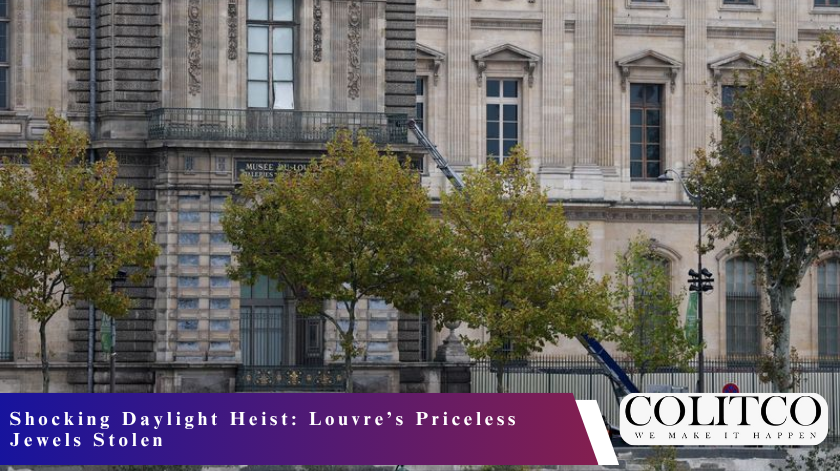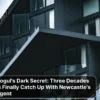The Louvre daylight robbery in Paris has shocked France and the art world in the whole world as thieves robbed off historic jewels of the crown in a daring daylight robbery. This was done during broad daylight in the gallery of Apollo in the famous museum, where the gang posing as maintenance workers attacked the museum, breaking into it using power tools and a mechanical ladder.
Some of the treasures stolen included a diamond and emerald necklace, which was used by Emperor Napoleon, a tiara jewel which was used by the empress Eugene and some of the jewels of Queen Marie-Amelie.
Law enforcement agencies are looking into the manner in which the thieves went around numerous security checkpoints in the museum. The CCTV footage showed that the perimeter security of the Louvre was grossly weak. Director of the museum Laurence des Cars acknowledged that some of his cameras were old, off-centre and could not document the break-in.
One of every three exhibition rooms had no proper surveillance, and alarm systems did not activate at the time of the theft. The boldness and accuracy of the operation have attracted global attention and criticism of the way France is able to preserve its national treasures.
Timeline of the French Crown Jewels Theft
The theft of the French crown jewels took place soon after the Louvre became open to the people on Sunday morning. The robbers were fast and precise and were not spotted by the staff or cameras. Analysts think that their choice of objects demonstrated the close familiarity with the art history and considerable acumen of the values of jewels.
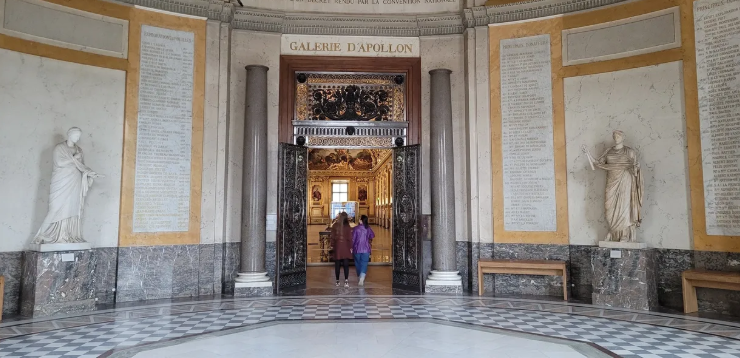
The police has started investigating the gallery of the Apollo with the help of the forensic evidence and examining the records of visitors and employees. The local security agencies are collaborating with the national security agencies to identify how the gang got access and how the stolen jewels can be traced.
Researchers believe that the heist could have been a case of inside information or that it could be an organised crime syndicate that has international connections.
The attack has revealed some major weak points in the museum security systems, and the security standards of cultural institutions in France are additionally reviewed on a wider scale.
Another Museum Robbery in France
Only a few hours after this theft at the Louvre, another robbery occurred at the Maison des Lumieres in Landres, during which some 2,000 gold and silver coins valued at an estimated 90,000 were stolen. This happened later in the evening on Sunday, and the personnel found the break-in on Tuesday morning. A broken display case and absent collections caused an instant response by the police.
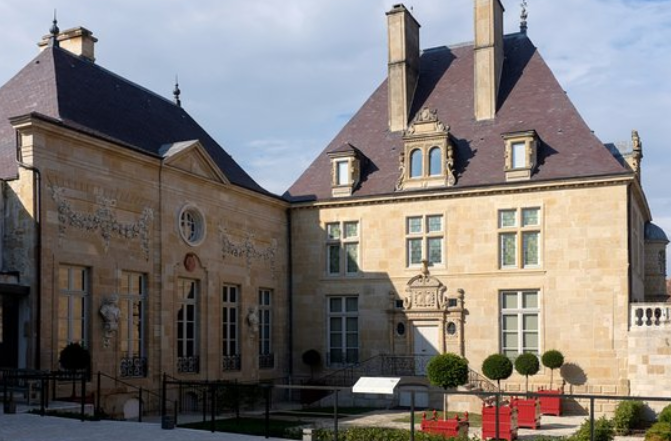
According to the officials, the choice of coins was professional. Officials are currently considering potential links between the two thefts, which happened within the same hours, and they may have been committed by the same or connected criminal groups.
Pattern of Recent Museum Thefts in France
The daylight museum robbery at the Louvre is one of the increasing list of crimes in museums that have caused concern to the cultural authorities. Earlier this year, six gold nuggets worth an estimated 1.5 million Euros were stolen from the Paris Natural History Museum. The suspects turned off the alarms and surveillance and ran away. In Barcelona, a Chinese citizen was later apprehended trying to sell some of the loot and is still in pre-trial detention.
In September, two Chinese porcelain dishes and a vase valued at a whopping €6.55 million were stolen from the Limoges Porcelain Museum by thieves. Although the items are readily traceable due to the documentation, no arrests have been made, and the works are still missing.
According to experts, these cases demonstrate a growing trend in organised cultural crimes against institutions that are poorly secured. France, with its great number of historical collections, has become more and more vulnerable.
At the Louvre, there are Security Failures
It was the daylight Louvre robbery that revealed terrible weaknesses in the security infrastructure of the museum. The French senators were informed by the director Laurence des Cars that the CCTV network was weak and obsolete and that most of the cameras were inoperable or in the wrong position. The exterior wall that was used by the thieves was only covered with one camera.
Justice Minister Gerald Darmanin called the incident a slap on the world as a nation, as thieves were able to drive an altered truck near the museum without raising any alarm. The government is also reconsidering the national security measures, such as the perimeter controls, the alarm system and the surveillance camera enhancement. The government has also directed an urgent strengthening of security levels in major cultural institutions.
A police Investigation and Forensic Work
The Louvre heist has gathered the vast resources of the French law enforcement in solving the case. CCTV videos are being examined frame by frame, and possible escape paths are being followed, and museum employees are being interviewed to provide leads. Forensic investigators are analysing the tool marks and fingerprints at the Gallery of Apollo at the point where the display cases had been broken.
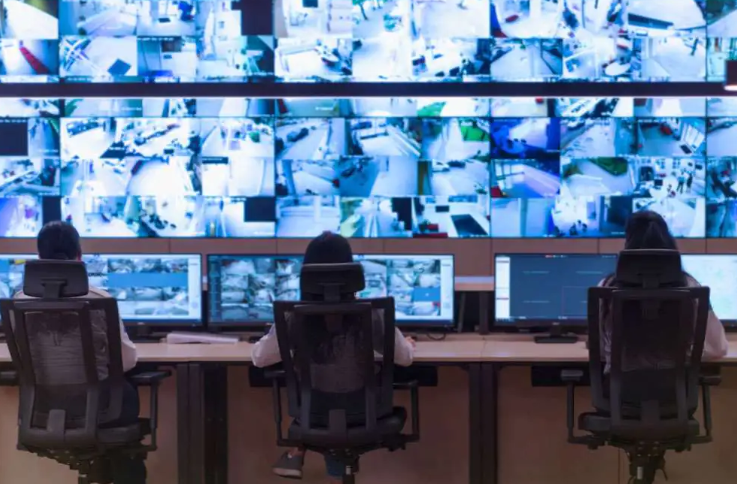
Obsolete and misaligned CCTV cameras contributed to the success of the Louvre daylight robbery.
There are also efforts being organised by the authorities with the help of INTERPOL and European counterparts due to the suspicion that the stolen properties may be smuggled to foreign countries. Museums in France have been advised to increase security and check emergency measures. The Ministry of Culture has requested an audit on all the major museums to determine risks of such attacks.
Global Repercussions
The daylight Louvre robbery has attained international attention, with security experts fearing that other museums can now also experience copycat crimes. The event has generated an immediate debate on the international museum security standards, and many museums are now investing more in surveillance systems and enhancing employee training.
The collectors, curators, and individual galleries are also alerted around the world. Security consultants have been advising the institutions to have stronger controls on access, to install a backup power system in the alarms and to use real-time monitoring systems. The incident highlights the implications of bolstered international collaboration regarding the restitution of stolen artefacts and the possibility of criminalising art crime rings.
Also Read: Inside the Contracted Kill Crew That Targeted a Sydney Mother
Final Thoughts
The Louvre daylight robbery experience is one of the greatest cultural theft acts in contemporary French history. In addition to the recent series of museum robberies, it points to systemic failure of the security of invaluable heritage. The governments are striving their best to retrieve the stolen crown jewels, regain the confidence of the people and avoid future loss.
France is dealing with a two-fold challenge of retrieving priceless artefacts and restoring its image as a world custodian of art and history, as investigations continue. The daylight theft in the Louvre is a good wakeup call to show that even the most glorified institutions are not immune when security systems are not updated to address advanced criminal activities.
FAQs
- What happened in the Louvre daylight robbery?
Thieves posed as workers and stole historic crown jewels from the Gallery of Apollo. - How much are the stolen jewels worth?
Approximately €88 million ($102 million). - Why wasn’t the Regent Diamond stolen?
It was too large and highly visible, making discreet theft difficult. - What security failures were found at the Louvre?
Outdated cameras, misaligned CCTV, and some rooms lacked surveillance and alarms. - How are authorities recovering the stolen jewels?
Police, INTERPOL, and forensic teams are investigating and tracking the items internationally. - When did the robbery occur?
On a Sunday morning shortly after the Louvre opened in 2025. - Were any other museums robbed at the same time?
Yes, the Maison des Lumières in Landres lost 2,000 gold and silver coins hours later.

